Artificial Intelligence: A Parent’s Guide
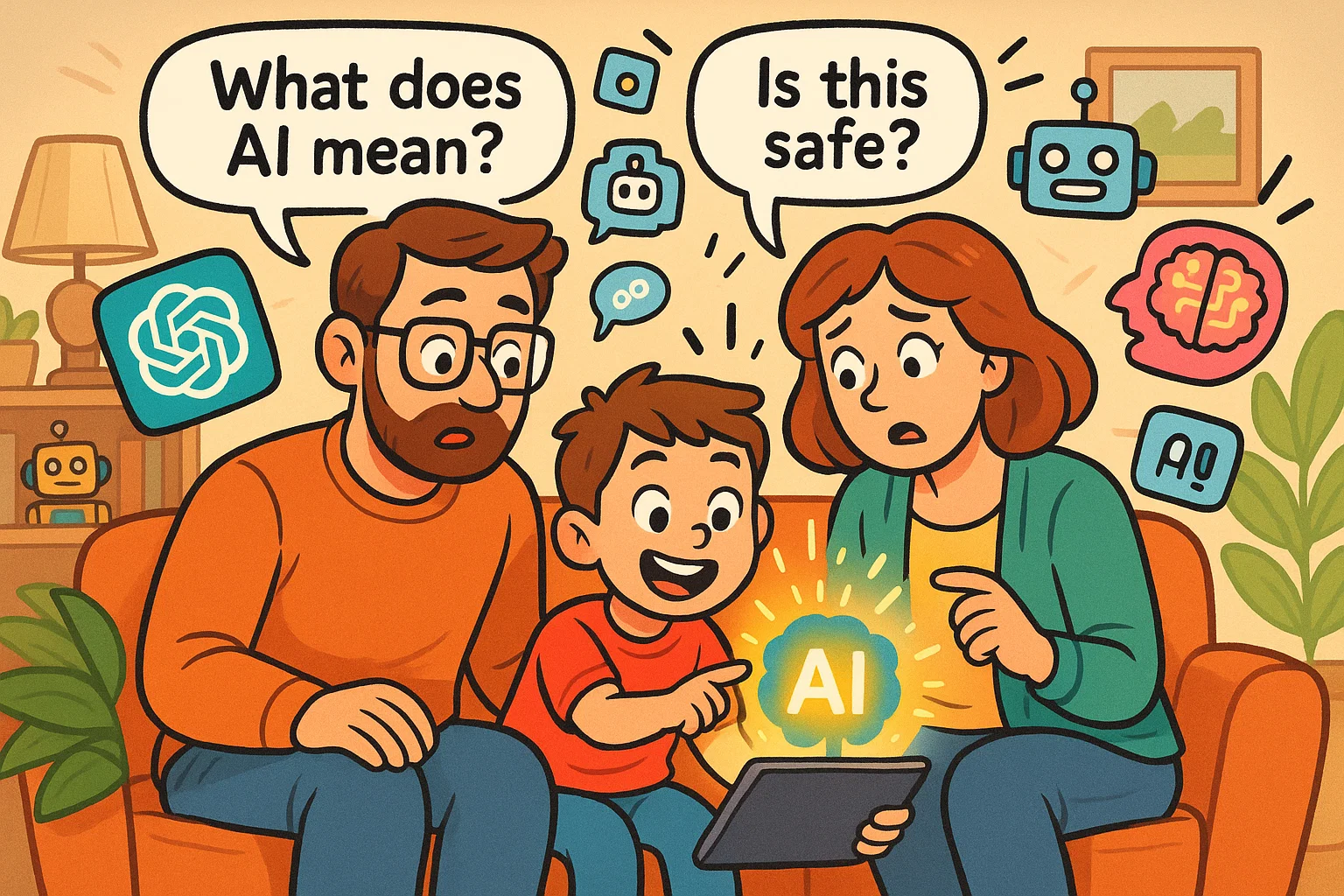
Artificial intelligence (AI) has become part of our daily lives in ways many parents never imagined just a few years ago. From voice assistants to recommendation systems on YouTube and Netflix, AI platforms are shaping how children learn, play, and socialize. While these tools can be useful, they also raise important questions about safety, privacy, and responsible use.
This parent’s guide to artificial intelligence explains the basics, highlights both benefits and risks, and offers practical advice on how to help your child navigate the digital age responsibly.
AI Basics for Parents
What is artificial intelligence?
Artificial intelligence refers to computer systems designed to perform tasks that usually require human intelligence—such as problem-solving, pattern recognition, or even creative writing. For children, AI shows up in familiar places: when they talk to Alexa or Siri, when YouTube automatically suggests the next video, or when a video game character “learns” how to respond to their actions. In simple terms, AI is the technology that allows machines to mimic human behavior and provide human-like responses.
How AI works in everyday life
Behind the scenes, AI is powered by algorithms—step-by-step instructions that allow computers to process large amounts of data. Machine learning, one of the most common branches of AI, means that a system improves its performance as it analyzes more information.
For example, a music app might “learn” your child’s favorite songs and suggest new ones. Generative AI goes further, creating entirely new content: a chatbot that writes a story, or an image generator that turns a short prompt into a digital illustration. These systems rely on neural networks inspired by the human brain, enabling them to deliver results that often feel surprisingly natural.
Key AI terms parents should know
For parents, a few terms appear again and again in discussions about artificial intelligence. An algorithm is the set of rules or instructions an AI system follows to produce a result. Bias refers to unfair or unbalanced results caused by the data used to train an AI. Deep learning is a sophisticated form of machine learning that uses multiple layers of neural networks to recognize complex patterns, such as identifying objects in a photo. Generative AI describes systems that create new text, images, or music. And responsible AI means developing and using AI ethically, with safeguards for accuracy, fairness, and privacy.
AI in Education and Child Development
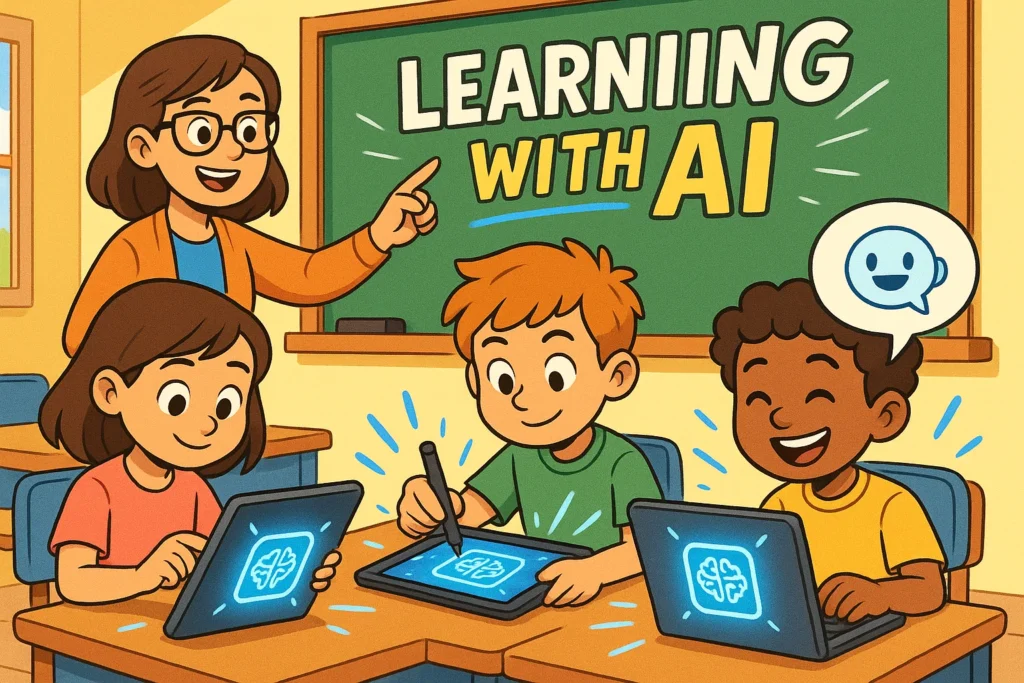
Artificial intelligence is becoming a common presence in classrooms and study environments. It offers opportunities to support children’s learning, but it also introduces challenges that parents and educators need to understand.
Benefits of AI in learning
When used responsibly, AI can support learning in powerful ways. Adaptive platforms adjust lessons to your child’s pace, tutoring apps answer questions in real time, and creative programs allow students to generate content such as poems, essays, or illustrations. These tools can make learning more engaging and personalized, encouraging children to explore subjects in greater depth.
Risks of AI in school settings
At the same time, the use of AI in education raises concerns. Children may rely too heavily on AI to complete assignments, leading to issues of plagiarism or a lack of genuine learning. There are also privacy questions, since many AI apps collect large amounts of student data. And while AI can provide quick answers, those answers are not always correct, which means children need guidance to evaluate information critically.
Parent role in guiding AI use
Your role as a parent is to help your child use AI tools responsibly. Encourage them to see AI as a support, not a substitute for thinking. Set boundaries on when and how these tools are used for schoolwork, and remind your child to check outputs against reliable sources. By staying involved and asking questions, you model critical thinking and help your child develop healthy digital habits.
AI Tools Kids May Use
From chatbots to image generators, children now have access to a variety of AI tools. Knowing what these platforms are and how they work helps parents guide safe and responsible use.
ChatGPT

What is ChatGPT?
ChatGPT is a generative AI tool trained on vast amounts of data to produce human-like text. Children may use it to answer questions, brainstorm ideas, or even write stories.
Is ChatGPT safe for kids?
While ChatGPT can be useful for learning and problem-solving, it sometimes produces incorrect information (known as “hallucinations”) or content that isn’t age-appropriate. Younger users should be supervised, and parents should discuss the importance of verifying information.
DALL·E
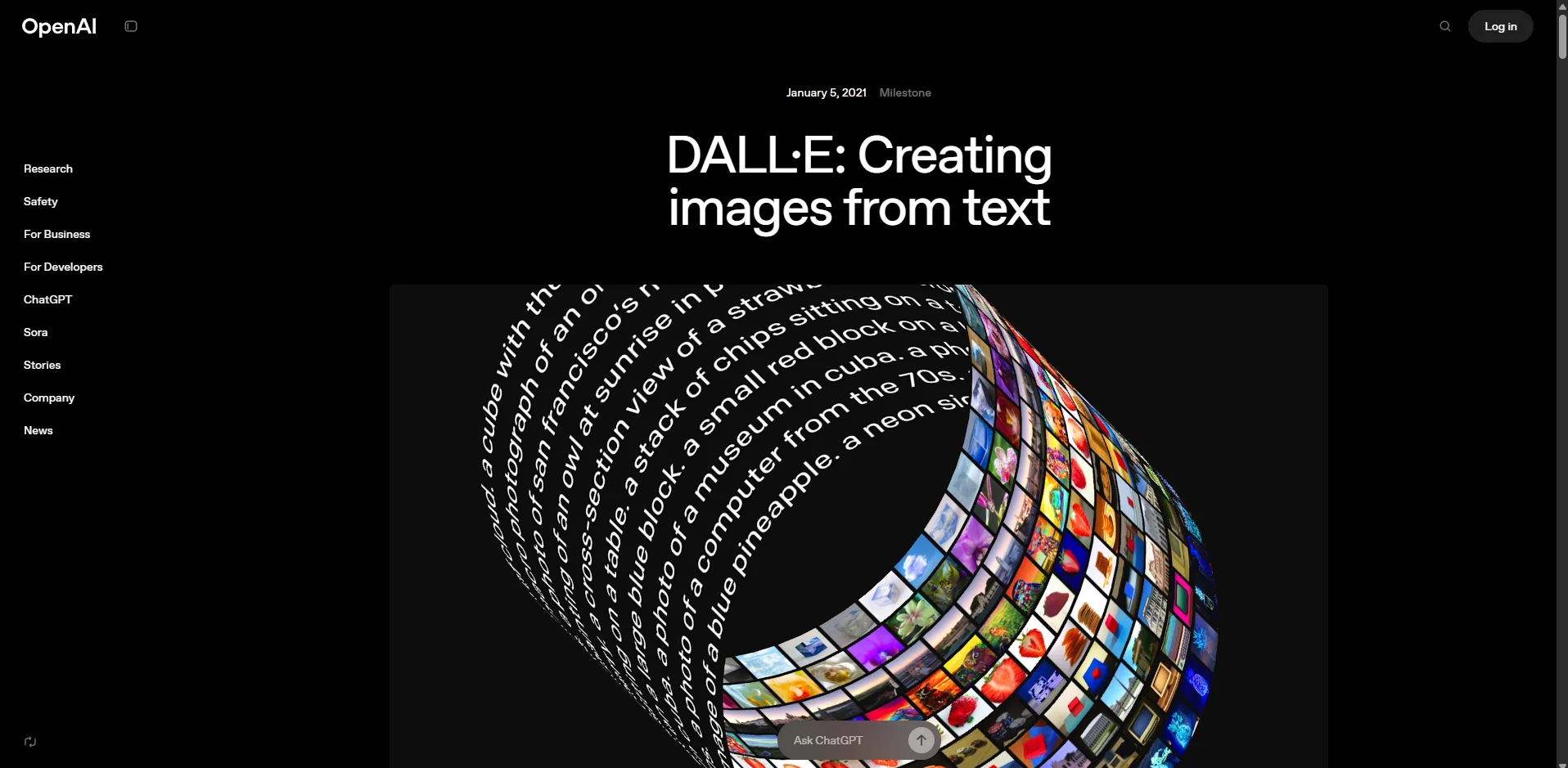
What is DALL·E?
DALL·E is an AI system that generates digital images from written prompts. Children may experiment with it to create artwork for school projects or personal use.
Is DALL·E safe for kids?
Although fascinating, image generation tools can sometimes produce inappropriate results. Parents should set clear rules, talk about ethical use, and check that filters are turned on.
Google Gemini

What is Google Gemini?
Formerly known as Bard, Google Gemini is an AI app that generates text, answers questions, and supports creative tasks.
Is Google Gemini safe?
As with other AI apps, parents need to review age restrictions and terms of service. While the tool can be helpful for schoolwork, it is essential to supervise its use and check for accuracy.
My AI from Snapchat
What is My AI?
This is a chatbot built directly into Snapchat, designed to answer questions or chat casually with users.
Is My AI safe for teens?
Because My AI functions as a digital companion, it raises concerns about privacy, misinformation, and dependency. Parents should explain the risks of oversharing and encourage healthy limits on social apps.
AI Risks Parents Should Know About
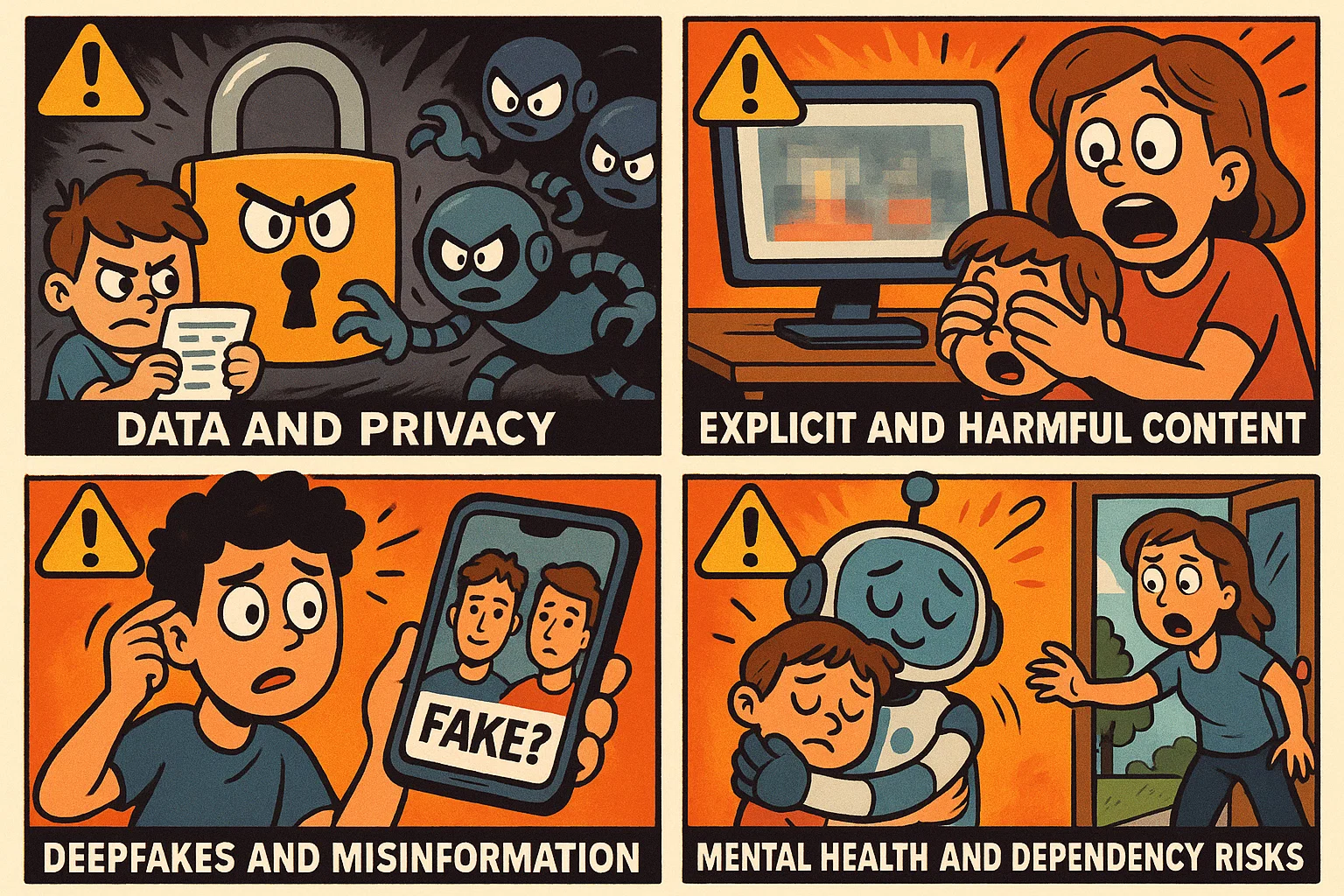
Like any technology, AI has downsides that families should not ignore. Understanding the main risks helps parents take proactive steps to protect children online and offline.
Data and privacy
AI systems often collect personal data—such as names, voices, search history, and even location details. Children may not realize how much they are sharing. Reviewing terms of service, setting parental controls, and reminding kids not to reveal private information are all key steps to safeguard their privacy.
Explicit and harmful content
Generative AI can also create harmful or inappropriate content. Even with filters, there is a chance children may encounter unsafe outputs. Parents should talk openly about these risks and explain why certain restrictions exist.
Deepfakes and misinformation
One of the growing risks is the spread of deepfake videos and AI-generated misinformation. Kids may see content that looks real but is entirely fabricated. Teaching them to question what they see, check multiple sources, and think critically is one of the best protections.
Mental health and dependency risks
Chatbots and AI companions can seem human-like and may become emotionally appealing to children. While they can provide comfort, overuse may lead to dependency or reduce real-world social interactions. Parents should keep an eye on balance and encourage offline activities.
Talking With Kids About AI
Open, age-appropriate conversations are one of the best ways to help children use AI wisely. By explaining risks and encouraging curiosity, parents can build trust and digital confidence.
Age-appropriate conversations
How you talk about artificial intelligence will depend on your child’s age. For young children, simple explanations work best, such as describing Alexa as a computer program that follows instructions. With teenagers, conversations can address the ethical use of AI, privacy concerns, and the risk of misinformation.
Encouraging critical thinking
Ask your child to reflect on what AI generates. Does an answer make sense? Could it be wrong? Where else can they verify it? By encouraging this questioning mindset, you help your child approach AI-generated content responsibly.
Setting digital boundaries
Healthy boundaries are just as important as open conversations. Set limits on screen time, agree on how AI tools can be used for schoolwork, and balance digital activities with offline hobbies and face-to-face interactions.
Parent Resources on AI
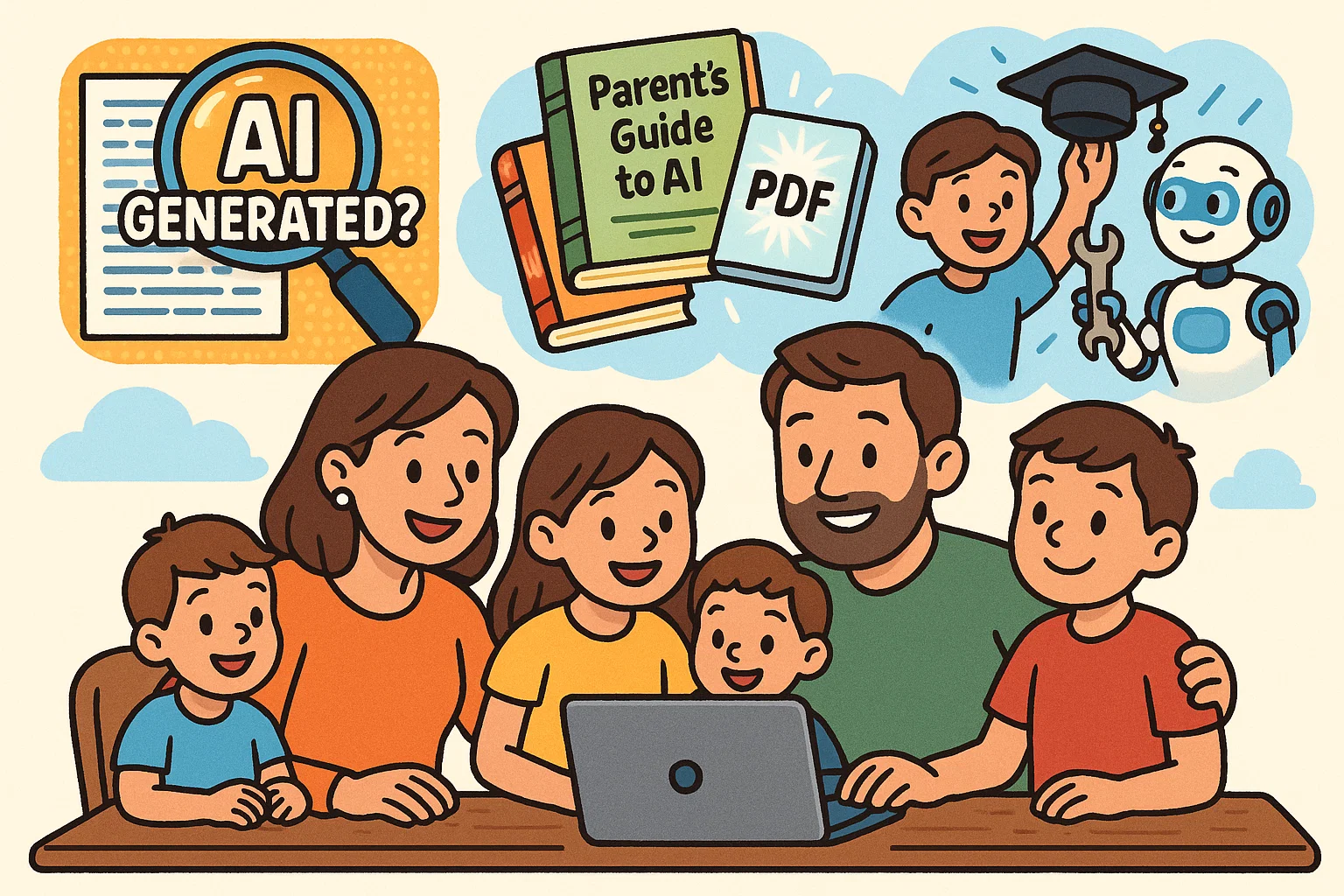
Parents don’t have to navigate AI alone—there are tools, guides, and research that can provide support. These resources make it easier to stay informed and make responsible choices for the family.
AI detectors and monitoring tools
Parents now have access to tools that can detect AI-generated text or images, helping them ensure that schoolwork is authentic and safe. Monitoring tools can also show how children use AI apps and help parents guide their online activity.
Guides and research for families
Several organizations provide trustworthy resources: Internet Matters offers parent guides to AI, the American Psychological Association has issued health advisories about AI and minors, and Common Sense Media reviews AI apps with age-based recommendations. These can help parents stay informed in a rapidly evolving field.
Future of work and AI skills
Experts suggest that children will benefit from learning AI literacy skills. Knowing how AI works, developing coding abilities, and learning to evaluate AI outputs critically will prepare them for a future in which AI is part of nearly every profession.
More Resources and Community
Beyond guides and safety tips, there is a growing community of parents and experts sharing experiences with AI. Staying connected ensures families are better prepared for future changes in technology.
Interactive parents’ guides
Quizzes, case studies, and interactive stories can help families explore the world of artificial intelligence together, turning learning into a shared experience.
Expert opinions and parent stories
Hearing from other parents who are navigating AI with their children provides valuable perspective. Experts can also share strategies for managing risks while maximizing the benefits of these tools.
Stay updated on kids’ new tech
Since AI develops quickly, staying updated is essential. Subscribing to newsletters, following blogs, and keeping an eye on new AI trends from major tech companies helps parents stay one step ahead.
AI can be a powerful tool for learning, creativity, and problem-solving, but it also introduces risks such as misinformation, harmful content, and privacy concerns. By talking openly with children, setting clear boundaries, and encouraging responsible use of AI tools like ChatGPT or DALL·E, parents can help their kids thrive in the digital world while staying safe.
